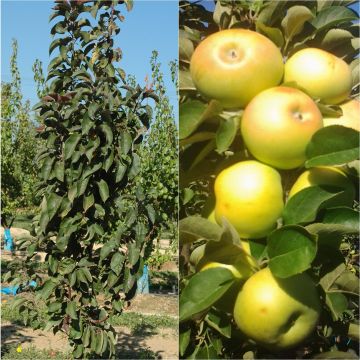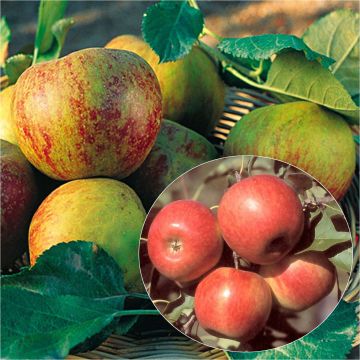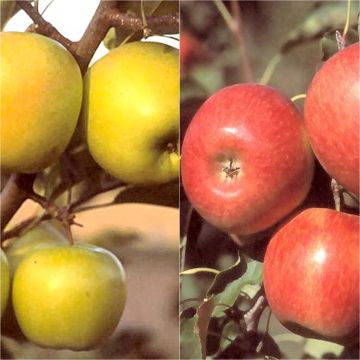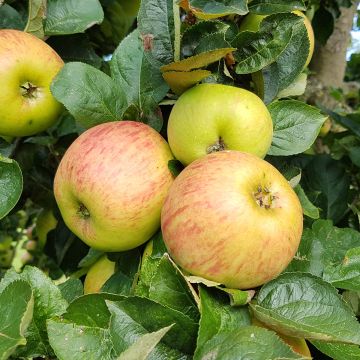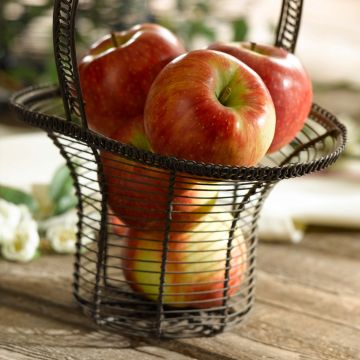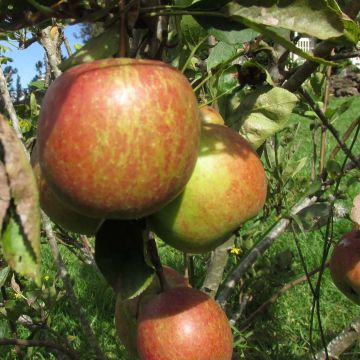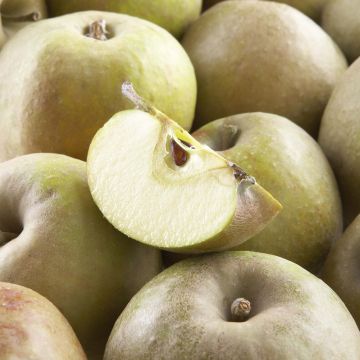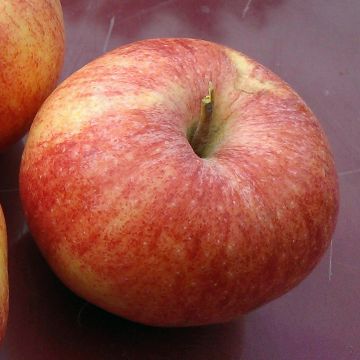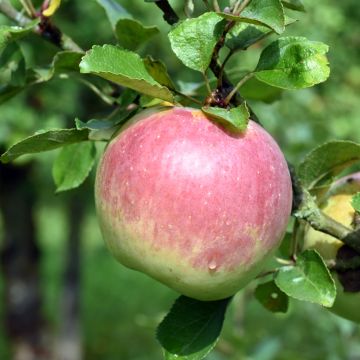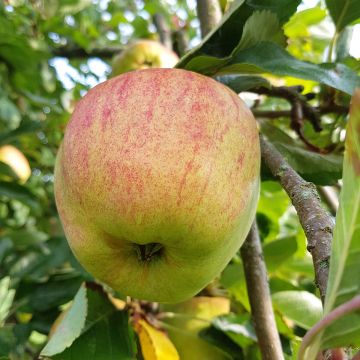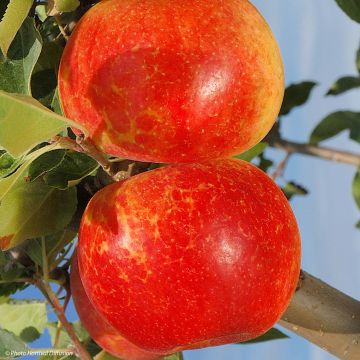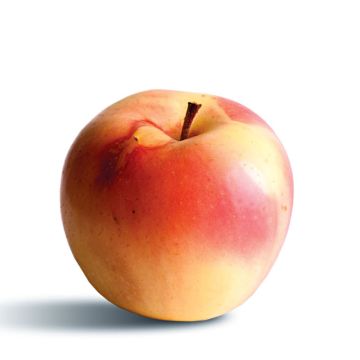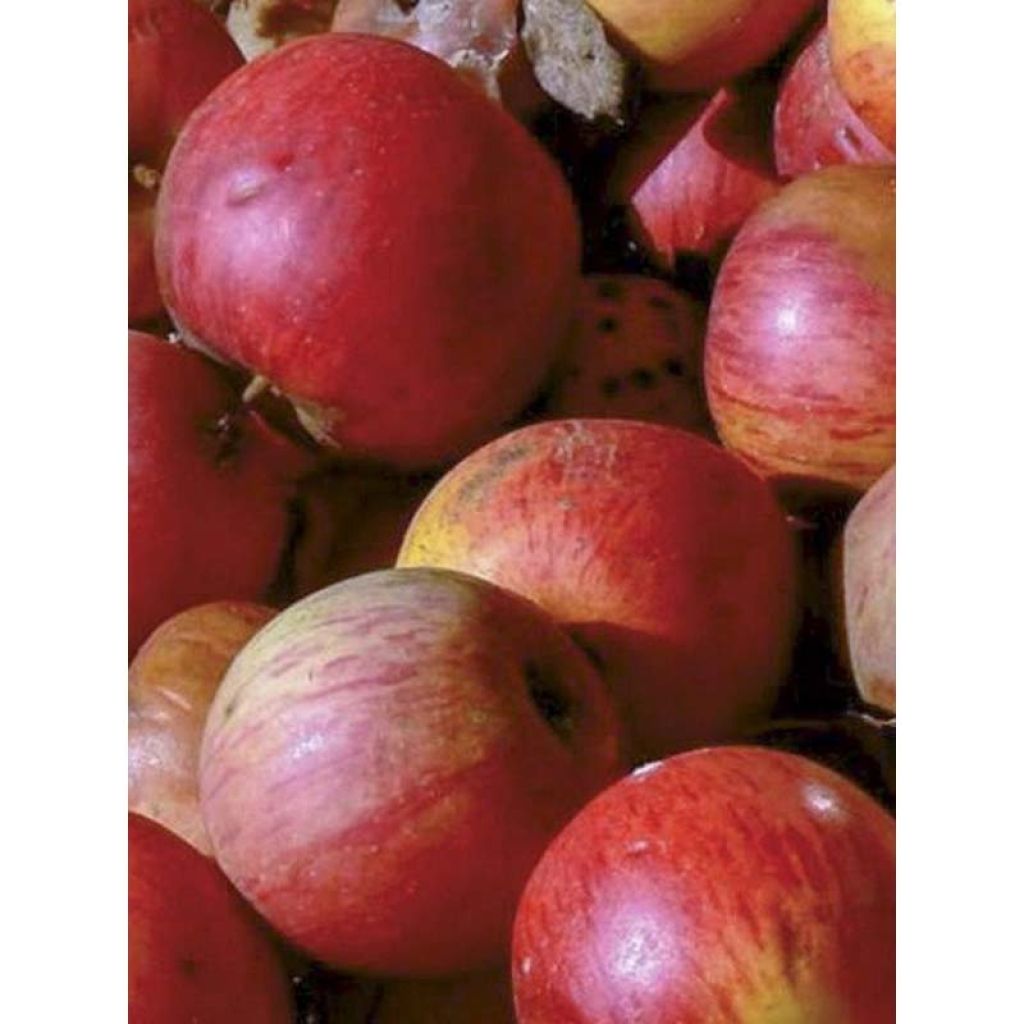

Apple Tree Pitchounette - Malus domestica
Apple Tree Pitchounette - Malus domestica
Malus domestica Pitchounette Cov 3318
Apple, Orchard apple, Table apple, Cultivated apple
Special offer!
Receive a €20 voucher for any order over €90 (excluding delivery costs, credit notes, and plastic-free options)!
1- Add your favorite plants to your cart.
2- Once you have reached €90, confirm your order (you can even choose the delivery date!).
3- As soon as your order is shipped, you will receive an email containing your voucher code, valid for 3 months (90 days).
Your voucher is unique and can only be used once, for any order with a minimum value of €20, excluding delivery costs.
Can be combined with other current offers, non-divisible and non-refundable.
Why not try an alternative variety in stock?
View all →This plant carries a 6 months recovery warranty
More information
We guarantee the quality of our plants for a full growing cycle, and will replace at our expense any plant that fails to recover under normal climatic and planting conditions.
Description
The Pitchounette apple tree is a recent selection from INRA, chosen for its natural resistance to scab and the quality of its fruits. This variety produces beautiful apples, beautifully coloured with red on a yellow background, and their crisp flesh is fragrant, juicy, sweet, and mild, of delicious taste quality. The fruit can be stored in cold storage after harvest until January-February. The tree is vigorous, productive, and heavily branched. It will be necessary to prune and thin it to avoid obtaining many small-sized apples and limit the phenomenon of alternate bearing. The harvest takes place in the second decade of September, one week before Golden Delicious.
In Latin Malus domestica, the apple tree is native to Europe, where its presence has been attested since antiquity. The Pitchounette apple tree is a spread and rounded tree that can reach a height of 4.50 m (15ft) and a spread of 3.50 m (11ft) in fertile and cool soils. It develops numerous branches that will need to be pruned to shape it. This variety is self-fertile and very productive, so it must be thinned to avoid small fruit size and the occurrence of diseases. Its hardiness makes it suitable for cultivation in cooler regions and the mountains. Pitchounette results from a cross-breeding between Fuji and an apple tree called X3143. Naturally resistant to many strains of scab, it is suitable for a family garden in an organic culture.
Its foliage comprises huge, ovate, slightly hairy leaves, greenish-brown on the upper side, whitish-green on the lower side, and deeply toothed.
Flowering occurs in April in white flowers; it is not afraid of frost. Partially self-fertile, the presence of apple trees whose flowering occurs simultaneously is recommended to obtain an abundant harvest. 'Golden Delicious' and 'Reine des Reinettes' are suitable. The apples of Pitchounette measure from 6.5 to 7.5 cm (3in) in diameter and their skin is heavily washed and striped with bright red on 3/4 of a yellow background. Their flesh is pale yellow, crisp, juicy, sweet, fragrant, and mild flavour.
These Pitchounette apples are delicious to eat but also suitable for making pastries and incredibly delicious Tatin pies. They can be consumed in compotes, jams, and savoury dishes, in combination with cheeses, for example.
Apple Tree Pitchounette - Malus domestica in pictures


Plant habit
Fruit
Flowering
Foliage
Botanical data
Malus
domestica
Pitchounette Cov 3318
Rosaceae
Apple, Orchard apple, Table apple, Cultivated apple
Cultivar or hybrid
Other Apple trees
View all →Planting and care
Choose a well-sunny location for your Pitchounette Apple Tree. The soil can be slightly calcareous or acidic but not excessively. It should be deep, moist, and fertile. Dig a large planting hole at least three times the volume of the root ball. Simultaneously add organic matter (potting soil, compost...) and a base fertiliser like a bonemeal. Do not bury the graft collar. Stake if necessary. Water abundantly, even in winter, even if it rains. Fruit trees are ideally planted between October and March, outside the freezing period. Container-grown plants can be grown year-round except during high heat or frost periods.
In winter, you can add a small handful of wood ash, rich in potash, which will improve fruiting. Watch out for possible aphid attacks during the season. A white powdery mildew fungus may appear on the leaves in summer, but it does not harm fruit development in gardens. Harvest takes place in September. Only store picked fruits. Apples are stored with the stem down, on shelves or in crates. Choose a preferably completely dark, dry, cool place but frost-free.
Planting period
Intended location
Care
Planting & care advice
This item has not been reviewed yet - be the first to leave a review about it.
Haven't found what you were looking for?
Hardiness is the lowest winter temperature a plant can endure without suffering serious damage or even dying. However, hardiness is affected by location (a sheltered area, such as a patio), protection (winter cover) and soil type (hardiness is improved by well-drained soil).

Photo Sharing Terms & Conditions
In order to encourage gardeners to interact and share their experiences, Promesse de fleurs offers various media enabling content to be uploaded onto its Site - in particular via the ‘Photo sharing’ module.
The User agrees to refrain from:
- Posting any content that is illegal, prejudicial, insulting, racist, inciteful to hatred, revisionist, contrary to public decency, that infringes on privacy or on the privacy rights of third parties, in particular the publicity rights of persons and goods, intellectual property rights, or the right to privacy.
- Submitting content on behalf of a third party;
- Impersonate the identity of a third party and/or publish any personal information about a third party;
In general, the User undertakes to refrain from any unethical behaviour.
All Content (in particular text, comments, files, images, photos, videos, creative works, etc.), which may be subject to property or intellectual property rights, image or other private rights, shall remain the property of the User, subject to the limited rights granted by the terms of the licence granted by Promesse de fleurs as stated below. Users are at liberty to publish or not to publish such Content on the Site, notably via the ‘Photo Sharing’ facility, and accept that this Content shall be made public and freely accessible, notably on the Internet.
Users further acknowledge, undertake to have ,and guarantee that they hold all necessary rights and permissions to publish such material on the Site, in particular with regard to the legislation in force pertaining to any privacy, property, intellectual property, image, or contractual rights, or rights of any other nature. By publishing such Content on the Site, Users acknowledge accepting full liability as publishers of the Content within the meaning of the law, and grant Promesse de fleurs, free of charge, an inclusive, worldwide licence for the said Content for the entire duration of its publication, including all reproduction, representation, up/downloading, displaying, performing, transmission, and storage rights.
Users also grant permission for their name to be linked to the Content and accept that this link may not always be made available.
By engaging in posting material, Users consent to their Content becoming automatically accessible on the Internet, in particular on other sites and/or blogs and/or web pages of the Promesse de fleurs site, including in particular social pages and the Promesse de fleurs catalogue.
Users may secure the removal of entrusted content free of charge by issuing a simple request via our contact form.
The flowering period indicated on our website applies to countries and regions located in USDA zone 8 (France, the United Kingdom, Ireland, the Netherlands, etc.)
It will vary according to where you live:
- In zones 9 to 10 (Italy, Spain, Greece, etc.), flowering will occur about 2 to 4 weeks earlier.
- In zones 6 to 7 (Germany, Poland, Slovenia, and lower mountainous regions), flowering will be delayed by 2 to 3 weeks.
- In zone 5 (Central Europe, Scandinavia), blooming will be delayed by 3 to 5 weeks.
In temperate climates, pruning of spring-flowering shrubs (forsythia, spireas, etc.) should be done just after flowering.
Pruning of summer-flowering shrubs (Indian Lilac, Perovskia, etc.) can be done in winter or spring.
In cold regions as well as with frost-sensitive plants, avoid pruning too early when severe frosts may still occur.
The planting period indicated on our website applies to countries and regions located in USDA zone 8 (France, United Kingdom, Ireland, Netherlands).
It will vary according to where you live:
- In Mediterranean zones (Marseille, Madrid, Milan, etc.), autumn and winter are the best planting periods.
- In continental zones (Strasbourg, Munich, Vienna, etc.), delay planting by 2 to 3 weeks in spring and bring it forward by 2 to 4 weeks in autumn.
- In mountainous regions (the Alps, Pyrenees, Carpathians, etc.), it is best to plant in late spring (May-June) or late summer (August-September).
The harvesting period indicated on our website applies to countries and regions in USDA zone 8 (France, England, Ireland, the Netherlands).
In colder areas (Scandinavia, Poland, Austria...) fruit and vegetable harvests are likely to be delayed by 3-4 weeks.
In warmer areas (Italy, Spain, Greece, etc.), harvesting will probably take place earlier, depending on weather conditions.
The sowing periods indicated on our website apply to countries and regions within USDA Zone 8 (France, UK, Ireland, Netherlands).
In colder areas (Scandinavia, Poland, Austria...), delay any outdoor sowing by 3-4 weeks, or sow under glass.
In warmer climes (Italy, Spain, Greece, etc.), bring outdoor sowing forward by a few weeks.






























